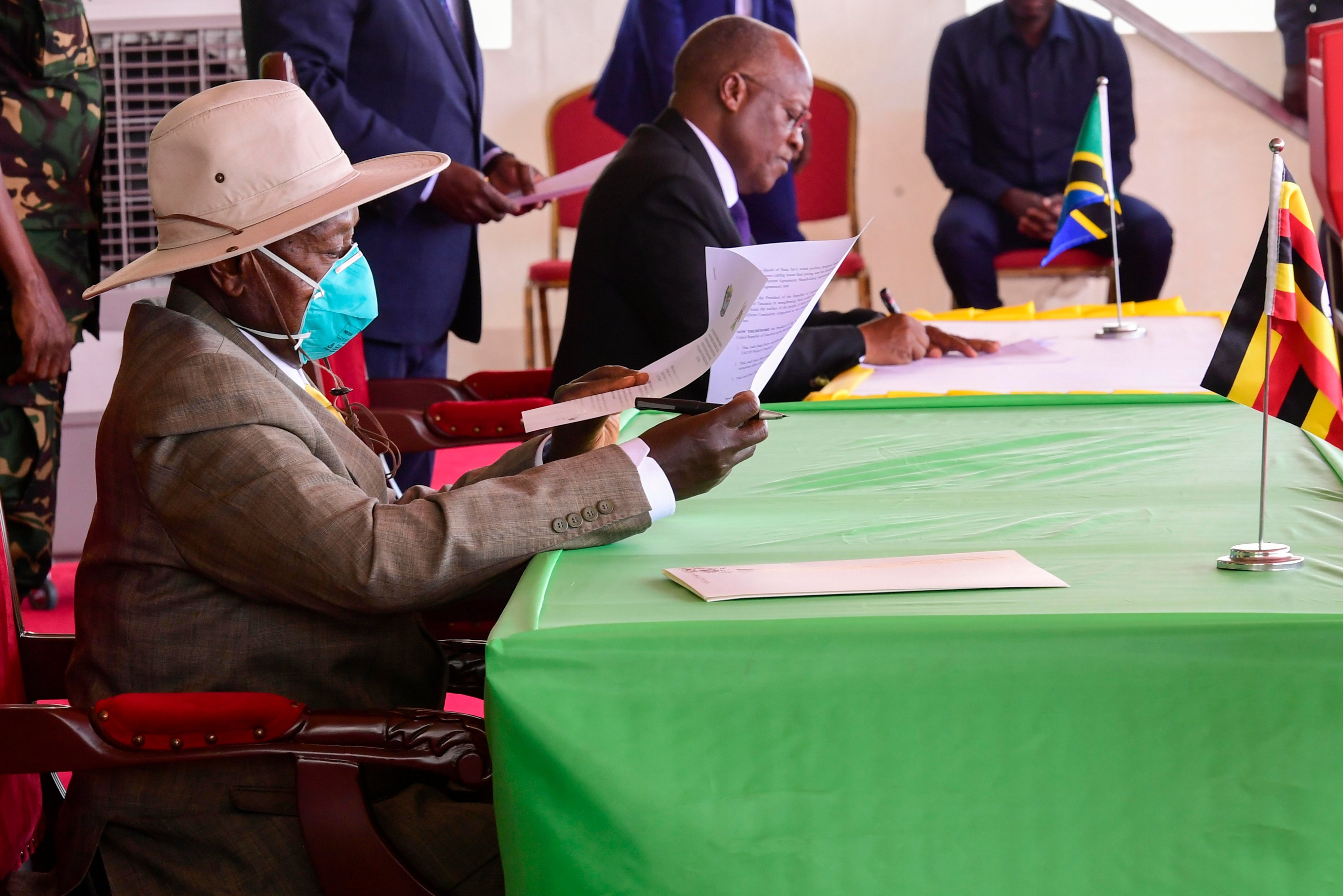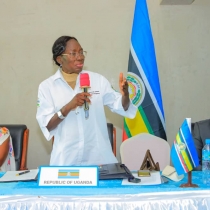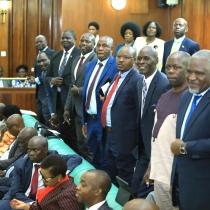
Uganda, Tanzania eye 60% boost in FDI during oil pipeline construction
The Host Government Agreement (HGA) for the East Africa Crude Oil Pipeline (EACOP) Project was Monday initialized by the Tanzanian government and the companies involved in the project, making another major step towards the Final Investment Decision.
Officials say that the Pipeline will unlock East Africa's potential by attracting investors to explore opportunities in the region.
The Project is expected to increase Uganda's and Tanzania's Foreign Direct Investment (FDI) by 60% during the construction phase, officials said in a Monday statement issued by the Project and the Tanzanian government.
The initialisation of the agreement follows a Sept. 13 meeting between President John Magufuli of Tanzania and Yoweri Museveni of Uganda where they agreed to fast-track the harmonization of issues that are delaying key projects in extracting Uganda's crude oil.
Uganda and Tanzania are required to execute HGAs in order to implement the Intergovernmental Agreement for the EACOP system which was signed between the two countries on May 25, 2017.
Uganda signed the HGA with Total on Sept. 12 in the presence of President Museveni and Patrick Pouyanne, the chairman and chief executive officer of Total.
HGA is an agreement between a foreign investor and a host government governing the rights and obligations of the foreign investor and the host government with respect to the development, construction, and operation of a project by the foreign investor.
The signing of the HGA helped guide the conditions of entry of the Uganda National Oil Company (UNOC) in the project and the agreement will also govern the export pipeline project in Uganda.
The oil pipeline will start in Buseruka sub-county, Hoima District, and run for 1,445km to the Tanzania port city of Tanga. When complete, it will be the world's longest heated oil pipeline.
The delays in signing of some of these agreements have pushed the announcement of the Final Investment Decision (FID), a key step in seeing various partners inject money in projects to commercialize Uganda’s oil resource.
The oil refinery Project Framework Agreement between the government and the Albertine Graben Refinery Consortium (AGRC) was signed in April of 2018. The AGRC comprises YAATRA Africa (Mauritius), Lionworks Group Limited (Mauritius), Nuovo Pignone International SRL (a General Electric Company located in Italy) and SAIPEM SPA (Italy).
In the consortium, Uganda is represented by UNOC, a limited liability petroleum company owned by the government. [The government will hold a 40% stake in the project and the other 60% belongs to the Consortium.]
The signing of the PFA meant pre-FID activities like Front End Engineering and Design (FEED), Project Capital and Investment Costs Estimation (PCE), Environmental and Social Impact Assessments (ESIA) can commence.
Under this agreement, AGRC is responsible for funding the pre-FID activities listed above and will also proceed to construct and operate the refinery. The $3.5-billion refinery in Hoima district, which will have a refining capacity of 60,000 barrels per day, is to be built by the AGRC led by American firm General Electric.
The project, upon completion, will enable Tanzania to earn about $3.2 billion and create between 10,000 to 15,000 jobs over the next 25 years.
Uganda discovered oil reserves in 2006 and has had over 6.5 billion barrels of oil. FID is expected to bring an investment of close to $20 billion, according to the Minister of Energy and Mineral Development Mary Goretti Kitutu.
Links
- 437 views











































Join the conversation